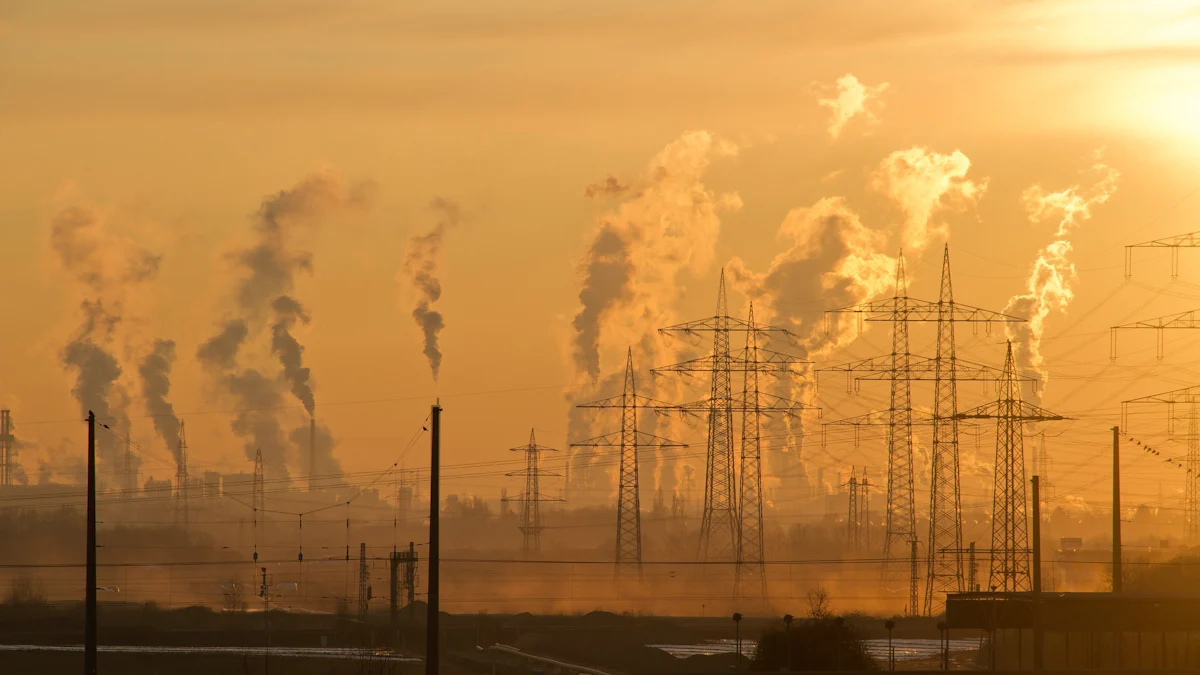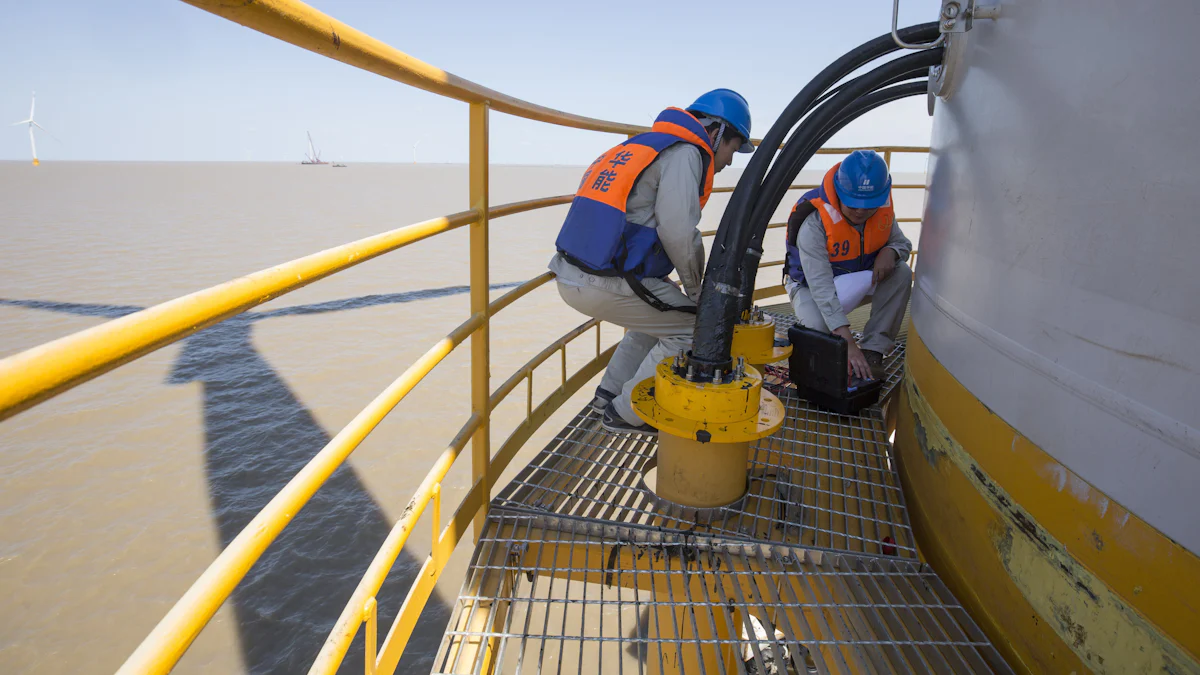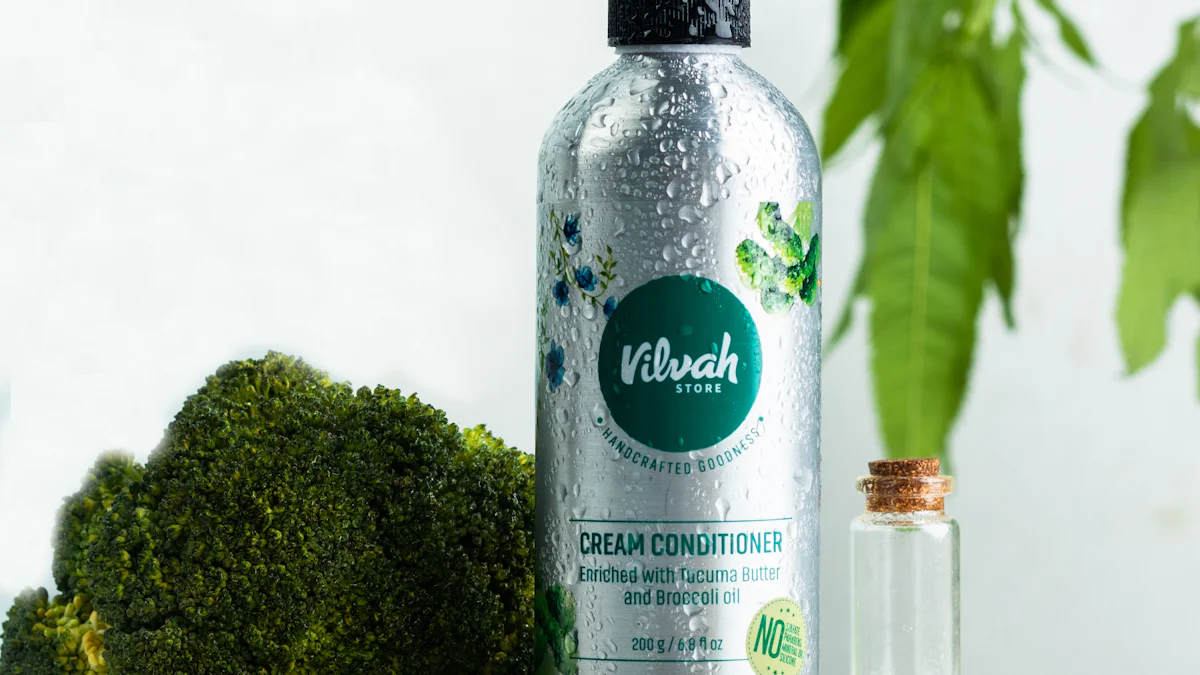CO2 Refrigeration: A Green Cooling Solution

You might wonder why CO2 is gaining attention in refrigeration systems. As a secondary refrigerant, CO2 offers a sustainable alternative to traditional options. Its low Global Warming Potential (GWP) and non-toxic nature make it an environmentally friendly choice. Unlike conventional refrigerants, CO2 does not harm the ozone layer. This makes it a green cooling solution. By using CO2, you contribute to reducing the carbon footprint. The CO2 Secondary Refrigerant Refrigeration Unit exemplifies this shift towards eco-friendly technology, promising efficiency and sustainability for future cooling needs.
Understanding CO2 as a Secondary Refrigerant
Definition and Role of Secondary Refrigerants
Secondary refrigerants play a vital role in modern refrigeration systems. They transfer heat from the primary refrigerant to the environment, ensuring efficient cooling. You might find secondary refrigerants in systems where direct contact with the primary refrigerant is not feasible. This setup allows for safer and more controlled cooling processes. By using secondary refrigerants, you can achieve better temperature regulation and energy efficiency.
Why CO2 is Chosen
Properties of CO2
Carbon dioxide, or CO2, stands out due to its unique properties. It is a natural, non-toxic, and non-flammable gas. These characteristics make it an ideal choice for refrigeration. CO2 has excellent thermodynamic properties, which means it can efficiently absorb and release heat. This efficiency is crucial for maintaining consistent temperatures in refrigeration systems. Additionally, CO2's high volumetric capacity allows for smaller system components, reducing both space and material costs.
Advantages over Traditional Refrigerants
CO2 offers several advantages over traditional refrigerants. First, it has a low Global Warming Potential (GWP), making it an environmentally friendly option. Unlike synthetic refrigerants, CO2 does not deplete the ozone layer. This makes it a sustainable choice for those looking to reduce their environmental impact. Furthermore, CO2 systems, such as the CO2 Secondary Refrigerant Refrigeration Unit, often result in lower energy consumption. Studies have shown that these systems can reduce pump energy use by up to 90% compared to conventional options. This reduction not only lowers operational costs but also contributes to a smaller carbon footprint.
By choosing CO2 as a secondary refrigerant, you align with the global shift towards greener cooling solutions. The CO2 Secondary Refrigerant Refrigeration Unit exemplifies this transition, offering a promising alternative to traditional systems. As the industry continues to evolve, CO2's role in refrigeration will likely expand, driven by its environmental benefits and efficiency.
CO2 Secondary Refrigerant Refrigeration Unit Design
System Design and Components
CO2 Circulation Process
In the CO2 Secondary Refrigerant Refrigeration Unit, the circulation process is crucial for efficient cooling. You will find that CO2, as a secondary refrigerant, moves through a closed-loop system. This system uses a pump to circulate CO2, which absorbs heat from the primary refrigerant. The high thermal conductivity of CO2 ensures rapid heat transfer, making the cooling process more effective. After absorbing heat, CO2 releases it to the environment, completing the cycle. This efficient circulation reduces the energy required for cooling, contributing to lower operational costs.
Integration with Primary Refrigerants
Integrating CO2 with primary refrigerants enhances the overall efficiency of refrigeration systems. In a typical setup, the primary refrigerant handles the initial cooling load. CO2 then takes over as a secondary refrigerant, transferring the absorbed heat away from the system. This integration allows for a reduction in the size of compressors and other components, thanks to CO2's excellent flow properties. By using CO2, you can achieve a more compact and cost-effective refrigeration unit. This design not only saves space but also reduces material costs, making it an attractive option for modern cooling solutions.
Technical Aspects
Pressure and Temperature Considerations
When working with the CO2 Secondary Refrigerant Refrigeration Unit, you must consider pressure and temperature. CO2 operates at higher pressures compared to traditional refrigerants. This characteristic requires robust system components to withstand these conditions. The transcritical CO2 cycle, often used in these units, involves a compressor discharge pressure above the critical point. This setup prevents CO2 from condensing, which can affect efficiency. However, the high pressure also allows for better heat transfer, enhancing the cooling performance. Monitoring and managing these parameters is essential for optimal operation and longevity of the system.
Safety Measures
Safety is paramount when dealing with high-pressure systems like the CO2 Secondary Refrigerant Refrigeration Unit. You should implement several safety measures to ensure safe operation. First, use pressure relief valves to prevent overpressure situations. These valves release excess pressure, protecting the system from damage. Additionally, regular maintenance checks help identify potential issues before they become serious problems. Training personnel on the proper handling and operation of CO2 systems is also crucial. By following these safety protocols, you can minimize risks and ensure the reliable performance of your refrigeration unit.
Environmental Benefits of CO2 Refrigeration

Low Global Warming Potential
CO2 refrigeration systems stand out due to their low Global Warming Potential (GWP). Unlike traditional refrigerants, CO2 does not contribute significantly to global warming. You can rely on CO2 to minimize environmental impact. This refrigerant does not harm the ozone layer, making it a sustainable choice. By choosing CO2, you help reduce greenhouse gas emissions. This aligns with global efforts to combat climate change. CO2's chemical stability ensures it remains effective without degrading the environment.
Energy Efficiency
Reduced Energy Consumption
CO2 refrigeration systems excel in energy efficiency. You will notice a significant reduction in energy consumption compared to conventional systems. CO2's thermophysical properties allow for efficient heat transfer. This means less energy is required to achieve desired cooling levels. The high volumetric capacity of CO2 contributes to smaller system components. This design reduces the energy needed for operation. By using CO2, you can achieve up to 90% reduction in pump energy use. This efficiency translates to lower energy bills and a smaller carbon footprint.
Cost Savings
Energy efficiency directly impacts cost savings. You will find that CO2 refrigeration systems offer economic benefits. Lower energy consumption results in reduced operational costs. The initial investment in CO2 systems may be higher, but long-term savings outweigh these costs. CO2's non-toxic and non-flammable nature reduces maintenance expenses. You can expect fewer repairs and replacements over time. Additionally, CO2 systems comply with new regulations, avoiding potential fines. By investing in CO2 refrigeration, you optimize costs while supporting environmental sustainability.
Challenges and Limitations of CO2 Refrigeration
Technical Challenges
High Pressure Requirements
When you work with CO2 refrigeration systems, you must address the high pressure requirements. CO2 operates at pressures significantly higher than traditional refrigerants. This characteristic demands robust and durable components to ensure safety and efficiency. The CO2 Secondary Refrigerant Refrigeration Unit often involves a transcritical cycle, where the pressure exceeds the critical point. This setup enhances heat transfer but requires careful monitoring. You need to invest in high-quality materials and equipment to withstand these pressures, which can increase initial costs.
System Complexity
The complexity of CO2 refrigeration systems presents another challenge. You will find that these systems require precise engineering and design. The integration of CO2 as a secondary refrigerant involves sophisticated control mechanisms. These systems demand skilled technicians for installation and maintenance. The complexity can lead to longer setup times and potential troubleshooting issues. However, with proper training and expertise, you can manage these complexities effectively. Understanding the intricacies of CO2 systems is crucial for optimizing performance and ensuring reliability.
Economic Considerations
Initial Investment Costs
The initial investment costs for CO2 refrigeration systems can be substantial. You might face higher upfront expenses compared to conventional systems. The need for specialized components and materials contributes to these costs. However, it's important to consider the long-term benefits. CO2 systems offer energy efficiency and environmental advantages that can offset initial investments over time. By evaluating the total cost of ownership, you can make informed decisions about adopting CO2 technology.
Maintenance and Operation
Maintenance and operation of CO2 refrigeration systems require careful attention. You must ensure regular maintenance to keep the system running efficiently. The high-pressure nature of CO2 systems necessitates frequent checks and servicing. While CO2 is non-toxic and non-flammable, the system's complexity demands skilled personnel for maintenance tasks. Operational costs may vary, but the energy savings from CO2 systems can lead to overall cost reductions. By prioritizing maintenance, you can extend the lifespan of your CO2 refrigeration unit and maximize its benefits.
Real-World Applications of CO2 Refrigeration

Successful Implementations
You can find CO2 refrigeration systems in various industries, showcasing their versatility and effectiveness. One notable example is the food and beverage sector, where companies like Carrier Commercial Refrigeration have led the way since 2004. They use CO2 as a natural refrigerant to reduce energy usage and costs, while also providing sustainability benefits. This approach aligns with the industry's push for eco-friendly solutions.
Supermarkets also benefit from CO2 refrigeration technology. Traditional supermarket refrigeration equipment consumes a significant amount of energy. By adopting CO2 systems, supermarkets can lower their energy consumption and operational costs. This shift not only supports environmental goals but also enhances the efficiency of their cooling processes.
In cold storage facilities, CO2 refrigeration systems offer a reliable and sustainable solution. These systems maintain optimal temperatures for perishable goods, ensuring product quality and safety. The growing adoption of CO2 refrigeration in these industries highlights its potential to revolutionize energy consumption and environmental impact.
Lessons Learned
From these successful implementations, you can learn valuable lessons about CO2 refrigeration. First, the environmental benefits of CO2 are undeniable. With an Ozone Depletion Potential (ODP) of 0 and a Global Warming Potential (GWP) of 1, CO2 stands out as a green refrigerant. This makes it a compelling choice for businesses aiming to reduce their carbon footprint.
However, CO2 refrigeration systems also present unique challenges. You must address the high pressure requirements and system complexity. These factors demand careful planning and skilled personnel for installation and maintenance. Despite these challenges, the efficiency potential of CO2 systems makes them a worthwhile investment.
Innovation in CO2 refrigerant technology continues to drive market growth. The integration of smart controls and monitoring solutions enhances system performance and reliability. By staying informed about these advancements, you can optimize your CO2 refrigeration systems and maximize their benefits.
Future Prospects of CO2 Refrigeration
Technological Advancements
You will find that technological advancements in CO2 refrigeration are paving the way for more efficient and sustainable cooling solutions. The world's leading compressor manufacturers are actively researching ways to enhance CO2 systems. They focus on improving trans-critical circulation systems, which are crucial for maximizing the efficiency of CO2 as a refrigerant. These advancements promise to overcome some of the technical challenges associated with high-pressure requirements and system complexity.
The integration of smart controls and monitoring solutions is another exciting development. These technologies allow you to optimize system performance and reliability. By using real-time data, you can make informed decisions about system operations, leading to improved energy efficiency and reduced operational costs. As technology continues to evolve, you can expect CO2 refrigeration systems to become even more effective and user-friendly.
Market Trends and Predictions
The market for CO2 refrigeration is poised for significant growth. As industries and governments prioritize environmentally friendly refrigerants, the demand for CO2 systems is expected to expand. This shift marks a crucial response to the global call for sustainable cooling solutions. You will see more businesses adopting CO2 refrigeration to align with regulatory pressures and environmental goals.
Supermarkets and cold storage facilities are at the forefront of this trend. These sectors recognize the environmental benefits of CO2 and are increasingly implementing it in their refrigeration systems. The focus on sustainable cold chain solutions presents opportunities for the growth of the CO2 refrigerant market. As more companies embrace this technology, you can anticipate a broader adoption across various industries.
In summary, the future of CO2 refrigeration looks promising. Technological advancements and market trends indicate a growing acceptance of CO2 as a viable and sustainable refrigerant. By staying informed about these developments, you can position yourself to take advantage of the benefits that CO2 refrigeration offers.
CO2 plays a crucial role as a secondary refrigerant, offering numerous benefits. You can rely on its low Global Warming Potential and stable chemical properties to minimize environmental impact. CO2 refrigeration systems not only enhance sustainability but also promise cost savings through energy efficiency. By adopting CO2 technology, you contribute to a greener future. The potential for innovation in this field remains vast. As you explore CO2 refrigeration, consider its advantages and the positive impact it can have on both the environment and your operations.
See Also
3 Key Advantages of CO₂ Refrigeration Over Conventional Systems
3 Cutting-Edge CO₂ Refrigeration Projects Showcasing ARKREF
The Sustainability Benefits of Choosing ARKREF CO₂ Refrigeration
Discovering ARKREF's Innovations in CO₂ Refrigeration Technology
Unveiling the Technology Behind ARKREF's CO₂ Refrigeration Units

